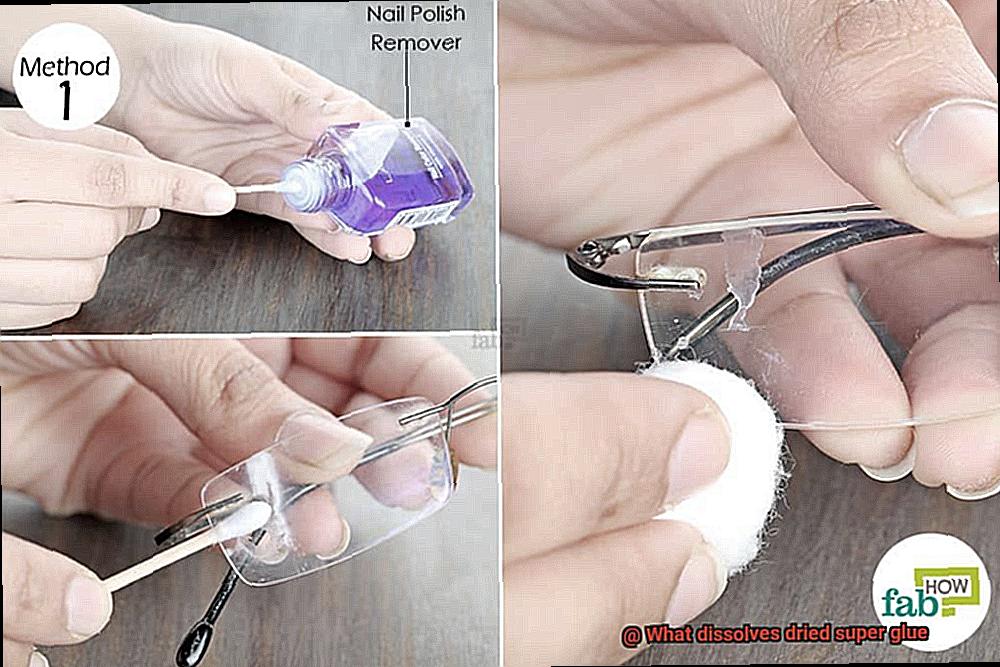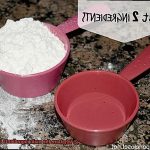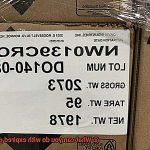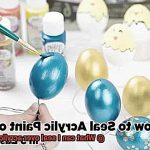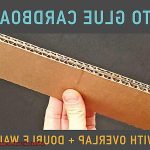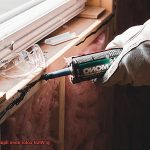Whether you’re a DIY daredevil, a meticulous model maker, or just an everyday problem solver, we’ve all experienced the infuriating grip of dried super glue. But fear not. We’ve delved deep into the realm of adhesive alchemy to bring you an expert guide that will make those stubborn bonds dissolve like magic.
Dried super glue can be a formidable foe, clinging tenaciously to surfaces as if it has a personal vendetta against your sanity. But worry not, my friend. In this all-encompassing blog post, we’ll unveil an arsenal of effective methods for dissolving dried super glue. From ordinary household items to specialized solvents, we’ve got every trick up our sleeves.
Prepare yourself for an epic journey through time-tested techniques that will rescue your cherished possessions from the clutches of super glue’s unyielding grasp. Bid farewell to unsightly surface damage and say hello to hassle-free solutions that will dissolve dried super glue, leaving your belongings gleaming like new.
So sit back, relax, and get ready to uncover the closely guarded secrets of combating super glue mishaps. We’ll show you how to restore your prized items to their former glory without breaking a sweat or your budget. Let’s dive headfirst into the unparalleled satisfaction of dissolving dried super glue together.
What is Super Glue?
Contents
- 1 What is Super Glue?
- 2 Acetone as a Solvent for Super Glue
- 3 Isopropyl Alcohol as a Solvent for Super Glue
- 4 Warm Soapy Water to Loosen Super Glue
- 5 Vinegar to Dissolve Super Glue
- 6 Lemon Juice to Dissolve Super Glue
- 7 Petroleum Jelly to Dissolve Super Glue
- 8 Oil to Dissolve Super Glue
- 9 Commercial Super Glue Removers
- 10 Conclusion
Super glue, also known as cyanoacrylate adhesive, is a powerful bonding agent that can create an unbreakable bond in seconds. Here are the key things you need to know about super glue:
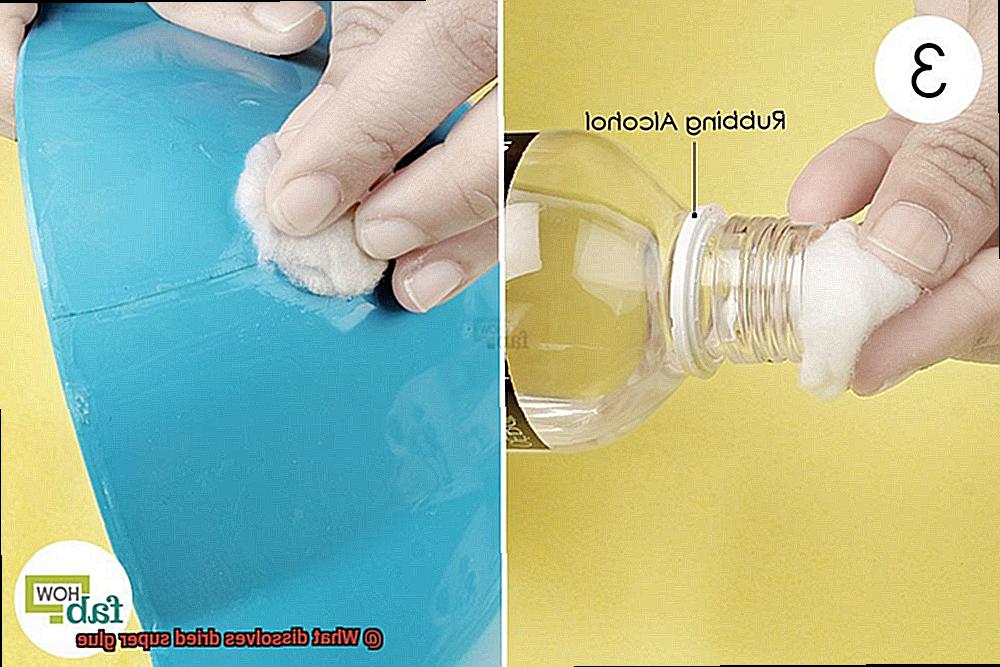
- Composition: Super glue is made up of cyanoacrylate, a special molecule composed of carbon, nitrogen, and oxygen atoms. When this molecule encounters moisture, it undergoes a chemical reaction called polymerization. This reaction transforms the liquid cyanoacrylate into a solid plastic-like substance.
- Fast-acting properties: Super glue is famous for its rapid bonding capabilities. It can set within seconds or minutes, depending on the specific formulation and environmental conditions. This makes it perfect for quick fixes and repairs.
- Versatile applications: Super glue can be used in various settings, from household repairs to industrial applications. It can bond materials like metal, plastic, ceramic, rubber, and some types of fabric together. Whether you need to fix a broken vase or secure small parts in an automotive assembly line, super glue is a reliable choice.
- Limitations: While super glue is incredibly strong, it may not work well with all materials or situations. Porous materials like wood or foam may not form a strong bond with super glue as it can seep into the material, weakening the connection. Additionally, super glue becomes rigid once it sets, so it may not be suitable for applications that require flexibility.
When it comes to removing dried super glue, there are several methods you can try:
- Acetone: This solvent is highly effective in dissolving dried super glue.
- Isopropyl Alcohol: Another solvent that can break down dried super glue.
- Warm Soapy Water: Soaking the glued area in warm soapy water can help loosen the adhesive.
- Vinegar and Lemon Juice: The acidic nature of vinegar and lemon juice can dissolve dried super glue.
- Petroleum Jelly and Oil: Applying petroleum jelly or oil to the glued area can soften the adhesive, making it easier to remove.
- Commercial Super Glue Removers: There are specific products available that are designed to dissolve dried super glue without damaging surfaces.

Remember to test any solvent or method on a small, inconspicuous area first to ensure it does not cause any damage. It is also recommended to wear gloves and work in a well-ventilated area when using solvents for safety purposes.
Acetone as a Solvent for Super Glue
Acetone, with its fruity odor and colorless appearance, is a popular and effective solvent for removing dried super glue. Found in everyday products like nail polish removers and paint thinners, this accessible liquid can work wonders in restoring materials to their original state. However, caution must be exercised when handling acetone due to its flammable nature. Working in a well-ventilated area and donning protective gloves are essential safety measures.
To initiate the process, immerse the affected area in acetone for a few minutes. This allows the powerful solvent to attack the chemical bonds in the super glue, rendering it more pliable for removal. Employing a plastic scraper or your fingernail, gently scrape away the softened adhesive. If needed, repeat this procedure until all traces of super glue have been dissolved.
While acetone is generally effective on most surfaces, it’s crucial to be mindful of potential damage it may cause to delicate or sensitive materials. To avoid any mishaps, test the solvent on a small, inconspicuous area before proceeding with full-scale application. Moreover, after successfully eliminating the super glue, cleanse the area with soap and water to eradicate any residual acetone.
Isopropyl Alcohol as a Solvent for Super Glue
Isopropyl alcohol, also known as rubbing alcohol, is a highly effective solvent for super glue removal. Its availability, affordability, and relative safety make it a popular choice for dissolving dried super glue. However, it is important to understand the proper usage and limitations of isopropyl alcohol as a solvent.
To effectively dissolve super glue with isopropyl alcohol, it is essential to use a high concentration of alcohol, preferably 90% or higher. Lower concentrations may not be as effective in breaking down the super glue molecules. Soaking a cloth or cotton ball in the alcohol and gently rubbing it over the dried super glue will initiate the dissolution process. The circular motions of the cloth will gradually break down the bonds between the super glue molecules, making it easier to remove. Depending on the thickness of the glue and how long it has been dried, multiple repetitions may be necessary to completely eliminate all traces of super glue.
However, it is crucial to note that isopropyl alcohol may not work on all surfaces or types of super glue. Before applying it to a larger area, testing a small inconspicuous area is recommended to ensure that no damage or discoloration occurs. Additionally, proper safety precautions should be taken when using isopropyl alcohol. Working in a well-ventilated area and avoiding contact with eyes or prolonged exposure to the skin are important measures. Furthermore, as isopropyl alcohol is flammable, keeping it away from open flames or heat sources is essential.
In instances where isopropyl alcohol does not work or is unsuitable for the surface being treated, alternative solvents such as acetone or nail polish remover can be considered. However, these solvents are generally harsher and may cause damage to certain surfaces, necessitating caution during their usage.
Warm Soapy Water to Loosen Super Glue
Using warm soapy water to loosen super glue is a simple and effective method that can be done at home. Super glue, also known as cyanoacrylate adhesive, is a strong and fast-acting adhesive that bonds quickly to a variety of surfaces. When super glue dries and hardens, it can be difficult to remove or dissolve.
Warm soapy water is one of the most common and effective methods for loosening dried super glue. The warm temperature of the water helps to soften the glue, making it easier to remove. To use warm soapy water, start by preparing a basin or sink filled with warm water. The water should be comfortably warm but not scalding hot. Add a few drops of dish soap or hand soap to the water and mix it gently until it forms a soapy solution.
Soak the affected area in the warm soapy water for several minutes. This allows the water and soap to penetrate the glue and loosen its grip on the surface. You may need to adjust the soaking time depending on the thickness and age of the glue.
After soaking, gently scrub the area with a soft brush or sponge. This can help further loosen the glue and facilitate its removal. Be careful not to scrub too hard, as this can damage delicate surfaces.
Rinse the area thoroughly with clean water to remove any soap residue. If necessary, repeat the process until all traces of super glue have been removed. Some stubborn glue may require multiple attempts to fully dissolve.
Vinegar to Dissolve Super Glue
Well, fear not, my friends, for vinegar is here to save the day. This humble kitchen staple contains a powerful weapon against super glue – acetic acid.
You may be wondering, how does vinegar dissolve super glue? The secret lies in the mighty acetic acid, which has the incredible ability to break down the chemical bonds in super glue. This means that even the strongest adhesive can be bid adieu with the help of vinegar.
But before you rush to your pantry, it’s important to note that vinegar may not work on all types of super glue. Some formulations are more resistant to solvents, but fear not, for vinegar shall prevail against most foes.
So how do you harness the power of vinegar? It’s as easy as pie. Grab a small bowl and fill it with vinegar. Place the affected area into this vinegar bath and let it soak for several minutes. This gives the acetic acid ample time to work its magic.
Once the glue has had its fair share of vinegar therapy, gently peel it off using your fingers or a soft cloth. Patience is key here – avoid using excessive force that could damage the surface underneath or cause skin irritation. If the glue proves stubborn, repeat the soaking process or use a toothbrush to gently scrub away the remnants.
After successfully removing the glue, don’t forget to clean the area with soap and water to ensure no residue or lingering smell of vinegar remains.
Lemon Juice to Dissolve Super Glue
This humble fruit, a staple in many kitchens, possesses the power to dissolve dried super glue. Yes, you heard me right – lemon juice is your ally in the battle against this stubborn adhesive.
Now, let me guide you through the steps of harnessing this citrus superhero’s powers. First, squeeze some fresh lemon juice onto the area where the super glue has made its unwelcome home. Let it sit for a few minutes, allowing the acidity of the lemon juice to work its magic.
Once the lemon juice has had time to penetrate the glue, take a soft cloth or sponge and gently scrub the area. You’ll notice that the bond of the super glue begins to weaken under the acidic assault. The citric acid in lemon juice acts as a natural solvent, breaking down the adhesive molecules that hold the glue together. This gradual erosion weakens the bond, making it easier to remove.
Repeat this process if necessary, until you have successfully dissolved all traces of the adhesive. However, it is important to note that while lemon juice is a natural and safe alternative to harsh chemicals, it may not be effective on all types of super glue. Industrial-grade glues or those with exceptionally strong adhesive properties may require a more powerful solvent.
For those situations, fear not. There are other options, such as acetone or rubbing alcohol, that can be tried if lemon juice doesn’t quite do the trick. But be cautious when using these stronger solvents, as they can be more aggressive and may damage certain surfaces.
Petroleum Jelly to Dissolve Super Glue
Petroleum jelly, also known as Vaseline, has proven to be a reliable and effective solution for dissolving dried super glue. Its thick consistency allows it to penetrate and break down the adhesive properties of the glue, making it easier to remove. This versatile product is easily accessible and affordable, making it a popular choice for individuals looking to dissolve super glue at home.
To use petroleum jelly for this purpose, you will need a few materials: petroleum jelly (such as Vaseline), a soft cloth or sponge, and possibly a mild soap or detergent. Begin by applying a generous amount of petroleum jelly directly onto the area where the super glue has dried. It’s important to make sure the entire affected area is covered.
Allow the petroleum jelly to sit on the glue for a few minutes. This will give it time to penetrate and soften the adhesive. After letting it sit, take a soft cloth or sponge and gently rub the area in circular motions. This gentle rubbing motion will help loosen the glue from the surface. If necessary, repeat the process multiple times until all of the super glue has been dissolved.
While petroleum jelly is generally safe to use and does not pose health risks if used as directed, there are some things to consider. Thicker layers of super glue may not respond as effectively to petroleum jelly, requiring alternative methods or professional assistance. Additionally, petroleum jelly can be greasy and may leave stains on certain materials. It is recommended to test it on a small, inconspicuous area before applying it to the entire affected surface.
To achieve successful results, keep these tips in mind: use an ample amount of petroleum jelly to ensure sufficient coverage of the super glue, be patient and allow the jelly to sit for a few minutes before attempting to remove the glue, use a gentle touch when rubbing the area to avoid damaging the surface, and if necessary, use a mild soap or detergent to clean any residue left behind by the petroleum jelly.
Oil to Dissolve Super Glue
When it comes to removing dried super glue, using oil is a practical and effective solution that can save you from the frustration of dealing with stubborn adhesive. Whether you need to remove super glue from a surface or skin, oil can be your secret weapon in breaking down the chemical bonds and making the removal process a breeze. Here’s a step-by-step guide on how to use oil to dissolve super glue:
- Choose the Right Oil: There are several types of oil that can be used for this purpose, such as vegetable oil, olive oil, coconut oil, or baby oil. The choice is yours. Pick the one that is readily available in your household.
- Apply the Oil: Take a small amount of your chosen oil and generously apply it directly to the affected area where the super glue resides. Ensure that you cover the entire glue spot with the oil, leaving no sticky residue untouched.
- Allow it to Sit: Now comes the waiting game. Let the oil work its magic by allowing it to sit on the super glue for a few minutes. This precious time will give the oil enough opportunity to penetrate and break down the adhesive properties of the glue.
- Gently Rub the Area: After patiently waiting, grab a soft cloth or sponge and gently rub the area where you applied the oil. With each stroke, you’ll witness the super glue starting to dissolve and loosen its grip, making it easier to remove.
- Repeat if Necessary: Depending on the strength and thickness of the super glue, you might need to repeat this process a few times. Don’t lose hope. Stay patient and continue applying oil until all traces of super glue have vanished.
- Cleanse and Restore: Congratulations. You’ve successfully dissolved the super glue. However, don’t forget to clean the area thoroughly with soap and water to remove any residual oil or remaining traces of glue.
While using oil can be an effective method for dissolving super glue, it’s important to note that it may not work on all surfaces. To avoid any mishaps, test a small, inconspicuous area first before applying oil to the entire surface. Additionally, if the super glue has bonded skin together, using oil may not be the safest or most effective option. In such cases, seeking medical advice or consulting a professional for proper removal methods is highly recommended.
Commercial Super Glue Removers
Commercial super glue removers are a game-changer when it comes to tackling stubborn glue on various surfaces. These products are readily available, making them a convenient and effective solution for removing super glue residue. From countertops to DIY projects, commercial super glue removers have got you covered. Let’s dive into the world of these powerful products and learn how to use them effectively.
First things first, choosing the right product is key. Head to your local hardware store or browse online retailers for commercial super glue removers. Look for ones that contain either acetone or isopropyl alcohol, as these solvents are known for their ability to break down super glue effectively.
Before diving in, don’t forget to read the instructions carefully. Different brands may have specific guidelines on how to apply and remove the glue remover.
To ensure that the commercial super glue remover won’t cause any unwanted damage or discoloration, it’s always a good idea to test it on a small, inconspicuous area first. Apply a small amount of the remover and wait for a few minutes to see if any adverse reactions occur.
Once you’re confident in the product’s compatibility with your surface, it’s time to apply the remover. Directly apply a small amount of the commercial super glue remover onto the dried glue, ensuring that you cover the entire affected area.
Now, patience is key. Let the remover sit on the glue for a few minutes, allowing it ample time to penetrate and break down those stubborn adhesive bonds.
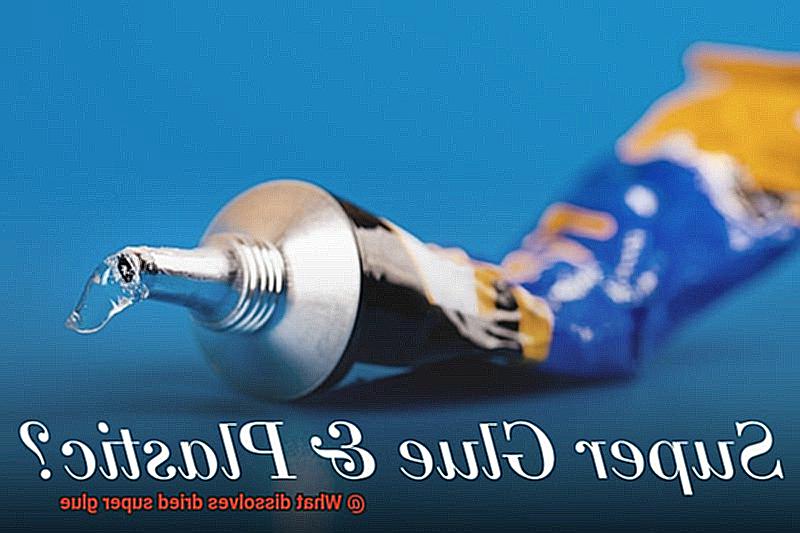
After giving it some time, grab a plastic scraper or use your fingernail to gently scrape off the softened glue. Start from one edge and work your way towards the center, applying moderate pressure as needed.
Depending on the thickness or stubbornness of the glue, you may need to repeat the process multiple times. Apply more remover and let it sit before scraping off any remaining residue.
Once all traces of glue have been removed, it’s time to cleanse the area. Use a mild soap and water solution to clean the surface, ensuring that you remove any leftover residue from the remover.
It’s important to keep in mind that certain surfaces may be sensitive to the chemicals found in commercial super glue removers. Always follow the manufacturer’s instructions and proceed with caution. If you have any concerns or questions, it’s best to seek professional advice.
_59ZzuLJcTw” >
Conclusion
When it comes to dealing with the stubborn grip of dried super glue, finding the right solution can feel like a daunting task. But fear not, for there are effective methods that can dissolve this adhesive nightmare. From everyday household items to specialized products, a range of options exist to tackle this sticky situation.
One powerful ally in the battle against dried super glue is acetone. This potent solvent, commonly found in nail polish removers, has the ability to break down the molecular bonds of the glue and restore freedom to your surfaces. Simply apply a small amount of acetone onto a cotton ball or cloth and gently rub it over the affected area. Watch as the once unyielding bond begins to loosen its grip, allowing you to easily remove the remnants of super glue.
If acetone is not readily available, fear not. There are other alternatives that can come to your rescue. Isopropyl alcohol, commonly known as rubbing alcohol, is another effective option for dissolving dried super glue. Its chemical properties make it an ideal candidate for breaking down this stubborn adhesive. Apply a generous amount of rubbing alcohol onto a cloth and gently rub it over the affected area until you witness the magic unfold before your eyes.
For those seeking a more natural approach, citrus-based solvents can be your secret weapon against dried super glue. The acidic properties found in lemon or orange essential oils have been known to work wonders when it comes to dissolving this pesky adhesive. Apply a few drops onto a cloth and gently rub over the affected area, allowing nature’s power to unleash its full potential.
In addition to these household remedies, there are also specialized products designed specifically for tackling dried super glue. Look for adhesive removers that contain ingredients such as cyanoacrylate de-bonder or ethyl acetate. These powerful solutions are formulated to effortlessly dissolve even the toughest super glue bonds.
In conclusion, when faced with dried super glue that seems impossible to remove, remember that there is a solution out there for you. Whether it be the mighty acetone, the trusty rubbing alcohol, the natural citrus-based solvents, or specialized adhesive removers, these options are here to save the day. So fear not, my friends, for your surfaces shall be liberated from the clutches of dried super glue with these powerful dissolving agents at your disposal.

